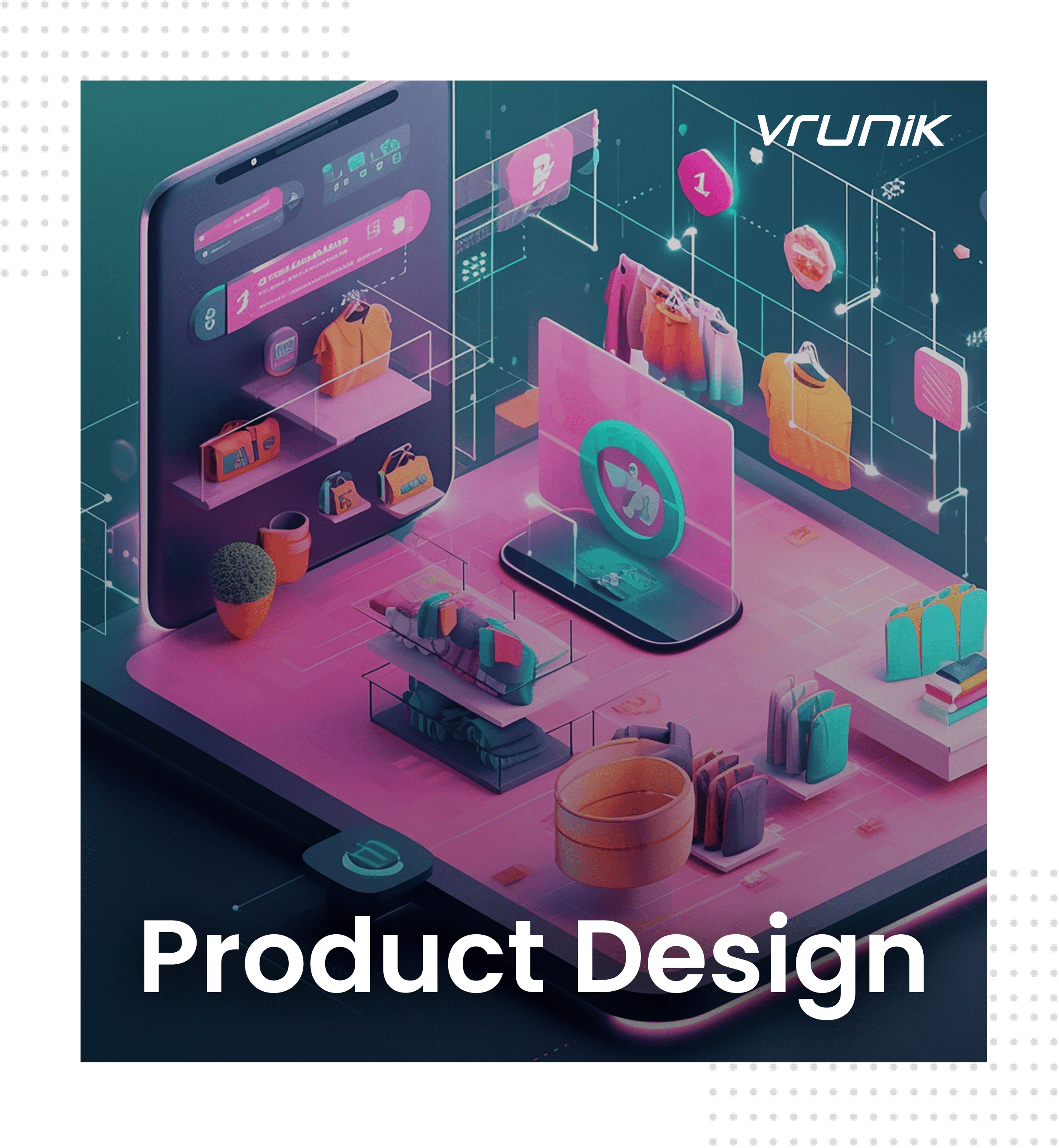OUR BLOG
Product Design
Crafting Solutions with Purpose
In the realm of innovation, where creativity intersects with functionality, product design emerges as a pivotal force driving user satisfaction and engagement. It transcends the mere creation of aesthetically pleasing objects, venturing into the understanding of human needs, solving real-world problems, and enhancing the overall user experience. Whether in the tangible realm of physical products or the digital sphere of user interfaces, product design influences our daily interactions, shaping the way we perceive and engage with the world around us.

Understanding Product Design
At its heart, product design embarks on a journey of empathy and understanding. It’s a process that starts with getting into the shoes of the users, grasping their habits, frustrations, and aspirations. This journey is about more than just aesthetics; it’s about creating solutions that fit seamlessly into the lives of those who use them, making their experiences intuitive, functional, and delightful.The essence of good product design lies in its invisibility. It acts as a silent facilitator of experiences that feel natural and effortless to the user, from intuitive digital interfaces to functional gadgets that simplify daily tasks.
Tracing the Roots: A Brief History
The concept of product design is deeply rooted in industrial design, a discipline that focuses on the intersection of form and function. With the evolution of manufacturing from handcrafted goods to mass production, the significance of thoughtful, user-centric design became increasingly apparent. Industrial designers became the unsung heroes behind the everyday objects we use, blending utility with elegance.As the field evolved, product design expanded its horizons to include a wide range of physical and digital products. Today, product designers work in multidisciplinary teams, integrating aesthetics, usability, and technology to craft the products of the future.
Exploring the Landscape: Roles in Product Design
The world of product design is diverse, encompassing a variety of roles, each bringing a unique perspective to the table:
- UX Designers: Specialists in enhancing user satisfaction through improved product interactions and experiences.
- Graphic Designers: Experts in visual communication, they infuse interfaces with life through color, typography, and imagery.
- Motion/Animation Designers: They introduce movement and dynamism to the user experience, making interfaces more engaging.
- User Researchers: They delve into user needs and preferences, providing valuable insights through analysis and testing.
- Data Analysts: By leveraging data, they optimize product features and layouts, blending analytical rigor with creative design.
- Prototypers: They bring ideas to life, creating tangible prototypes for testing and feedback, facilitating rapid iteration.
Navigating the Journey: The Product Design Process
The product design process is an iterative journey of discovery, refinement, and validation. It starts with empathy for the user, moves through problem definition and solution ideation, and culminates in prototyping, testing, and refining based on user feedback. This ensures that the final product not only meets but exceeds user expectations.
Embracing Lean Product Design
In today’s fast-paced world, Lean Product Design offers a framework for agile development, emphasizing rapid iteration and continuous user feedback. This approach fosters collaboration, experimentation, and a laser focus on delivering value to users, enabling teams to quickly adapt to market changes.
Equipping Designers: Tools of the Trade
Product designers utilize a vast array of tools to realize their visions. From journey mapping applications to sophisticated prototyping tools, each plays a crucial role in the design process, enabling designers to iterate quickly and effectively.
Conclusion: Designing for Impact
Product design is more than a profession; it’s a mindset dedicated to creating solutions that make a difference. Every design, from the simplest object to the most complex digital experience, has the potential to impact our lives. As we continue to explore the intersection of technology and human interaction, let us remain committed to innovating with purpose and designing with empathy.
FAQ’s
Q: What is product design?
A: Product design is the process of creating products that meet user needs and enhance their experiences, encompassing both physical objects and digital interfaces.
Q: Why is empathy important in product design?
A: Empathy allows designers to understand the user’s perspective, ensuring that the products they create genuinely address user needs and improve their lives.
Q: What roles are involved in product design?
A: Product design involves a variety of roles, including UX designers, graphic designers, motion/animation designers, user researchers, data analysts, and prototypers.
Q: What is Lean Product Design?
A: Lean Product Design is an approach that emphasizes rapid iteration, continuous user feedback, and collaboration to quickly validate ideas and adapt to market changes.
Q: How do product designers bring their ideas to life?
A: Product designers use a range of tools for journey mapping, wireframing, prototyping, and user testing to iterate on their ideas and refine them based on user feedback.
Q: What is UI/UX design in the context of product design?
A: UI/UX design in product design refers to the process of creating intuitive interfaces and immersive experiences that enhance user engagement and satisfaction with physical or digital products.
Q: Why is empathy important in UI/UX design for product design?
A: Empathy is crucial in UI/UX design for product design as it enables designers to understand users’ needs, behaviors, and pain points. By empathizing with users, designers can create products that truly resonate with their audience, leading to better usability and overall satisfaction.
Q: What roles are involved in UI/UX design for product design?
A: UI/UX design for product design involves various roles, including UX designers, graphic designers, motion/animation designers, user researchers, data analysts, and prototypers. Each role contributes to creating a cohesive and user-centered product experience.
Q: What is Lean UI/UX Design, and how does it apply to product design?
A: Lean UI/UX Design is an agile approach that emphasizes rapid iteration and continuous user feedback to create innovative and user-centric products. In the context of product design, Lean UI/UX Design enables teams to quickly validate ideas, adapt to market changes, and deliver value to users efficiently.
Q: How do UI/UX designers bring their ideas to life in the realm of product design?
A: UI/UX designers in product design use a variety of tools and techniques, including wireframing, prototyping, and user testing, to iterate on their ideas and create impactful designs. By leveraging these tools, designers can translate their vision into tangible products that meet user needs and expectations effectively.
If you are interested in learning more about how UX design can help to transform your legacy systems and ensure business continuity, please feel free to reach out to me at nk@vrunik.com or call +91 9554939637.

